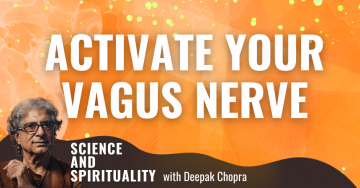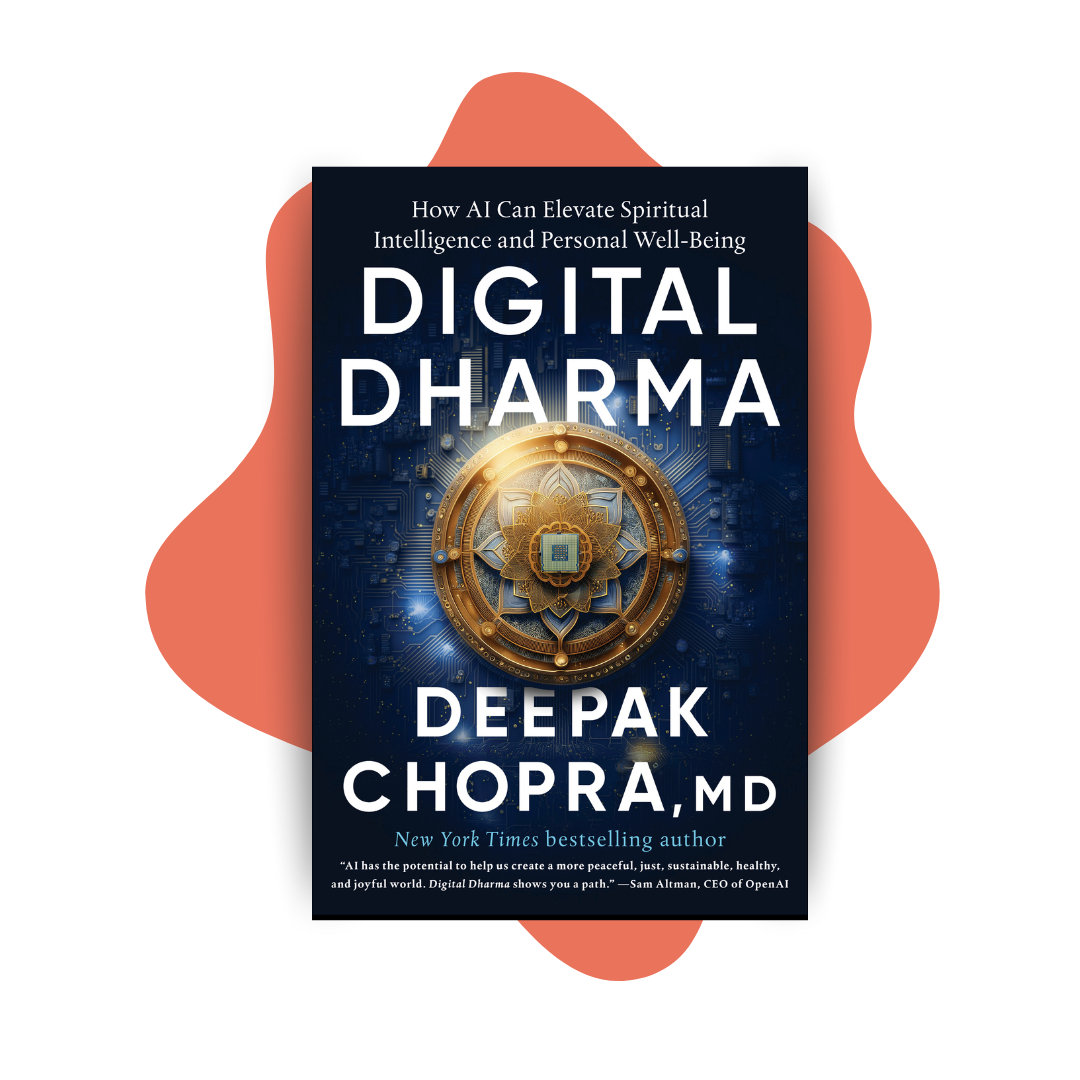Home › Podcasts › Science and Spirituality with Deepak Chopra › Activate Your Vagus Nerve For Better Health And Happiness
Activate Your Vagus Nerve For Better Health And Happiness.

The vagus nerve, known as the “healing nerve,” holds the key to unlocking deep relaxation, reducing stress, and boosting your overall well-being. Discover how to tap into its power through simple practices like eye movements, breathing exercises, and even smiling! In this episode, Deepak Chopra reveals fascinating facts about the vagus nerve and offers practical tips to activate it for a calmer, healthier you.
Listen to the podcast here
Activate Your Vagus Nerve For Better Health And Happiness
Gain Valuable Insights Into The Many Ways We Can Stimulate The Vagus Nerve And Promote Well-Being
If you keep up with the literature and the scientific research on self-regulation, healing, and homeostasis, then you’ve probably heard of the vagus nerve. The vagus nerve is part of the parasympathetic nervous system and it’s the longest and most important nerve in the parasympathetic nervous system. It controls many involuntary functions including heart rate, breathing, digestion, and immune response. The vagus nerve has been considered the healing nerve of the body.
The sympathetic nervous system is responsible for the fight and flight response. The parasympathetic nervous system is for the rest, rejuvenation, renew, and healing response. These are part of our autonomic nervous system. In yogic traditions, the autonomic nervous system would be considered the neural correlate of the subconscious mind. In turn, the subconscious mind is memory, karma, desire, and all the experiences we’ve had in the past. Not only how we’ve had these experiences in the past but how we interpreted these experiences in the past.
Tweet: The subconscious mind is the memories, karma, desires, and experiences we’ve had in the past and how we interpreted them.
The vagus nerve is the longest never in our body. It travels from the midbrain, and in turn, is influenced by eye movements because it interacts with the oculomotor nerve. It influences and is influenced by facial muscles, tone of voice, breathing, and heart rate variability. It is also the nerve that goes through the diaphragm. It interacts with all hollow and solid organs of the body.
Ultimately, it also influences the activity of the microbiome bringing it to self-regulation and removing inflammation or dysbiosis. The vagus nerve has bilateral traffic so we can activate healing by vagal activation. Let’s see some of the methods by which you can activate the vagus nerve. First is eye movements. When we move our eyes, we are stimulating the vagus nerve. This simulation can help to calm the body and the mind. It also reduces stress and anxiety.

Vagus Nerve: When we move our eyes, we are stimulating the vagus nerve. This can help to calm the body and mind, as well as reduce stress and anxiety.
There are a number of eye movements and eye exercises that have been shown to be effective in stimulating the vagus nerve. Here are some of them. One is called the Oculocardiac Reflex or OCR. This is a reflex that causes the heart rate to slow down when our eyes move in different directions. To stimulate the OCR or what we call the Oculocardiac Reflex, what you can do is you can gently press on your closed eyes for a few seconds. That’s one way.
There’s something called divergent gaze. This is an exercise where you focus your eyes on a distant object and then slowly move them to the sides. This exercise can help to relax the muscles in the eyes and neck which can also in turn stimulate the vagus nerve. There’s also something called bilateral eye movement therapy. This is a more structured eye movement exercise that is often used to treat trauma and anxiety disorders.
Bilateral eye movement therapy involves rapid rhythmic eye movements from side to side. It takes a little practice but if you’ve ever seen Bharatanatyam dancing, you see those dance moves with mudras, breathing, chanting, and eye movements. All of them stimulate the vagus nerve. Slow deep breathing is a powerful way to stimulate the vagus nerve to calm the body and mind. Every yogasana stimulates a particular branch of the vagus nerve. Singing, chanting, humming, or just saying “hmm or umm” stimulates the vagus nerve.
Probiotics are light bacteria that can help improve gut health. A healthy gut is important for maintaining a healthy vagus nerve. Kriyas, bandhas, and mudras, contracting and expanding the sphincters all stimulate the vagus nerve. One of the best ways to stimulate the vagus nerve is by smiling. Smiling can activate the vagus nerve. The vagus nerve is the longest nerve in the body. It is also stimulated by smiling. When we smile, the muscles in our face activate the vagus nerve. We send signals to the brain that we are happy and relaxed. This can lead to a decrease in heart rate and blood pressure. It can change your heart rate variability and increase feelings of well-being.

Vagus Nerve: When we smile, the muscles in the face activate the vague nerve, which causes us to be happy and relaxed.
There was a study published in the Journal of Psychological Science that found that when people were asked to smile for two minutes, they had increased vagal tone compared to those who were asked to keep a neutral expression. The study also found that the more genuine the smile, the greater the increase in vagal tone. Another study published in the Journal of Neurology found that people who had a stroke and lost the ability to smile still had increased vagal tone when they were shown pictures of people smiling.
This suggests that the act of smiling even if it is not genuine can activate the vagus nerve and have beneficial effects on the body. Next time, if we are feeling stressed or anxious, try smiling for a few minutes. It may help to calm your body and mind. If there’s anything I’ve left out like deep breathing exercises, singing, humming, and gargling, when you gargle, and in Ayurveda, you use warm sesame oil to gargle, you stimulate the vagus nerve.
Massage, meditation, spending time in nature, and laughter stimulate the vagus nerve. By incorporating these activities into your daily routine, you can help to improve your vagal tone and your overall health and well-being. Try one or all of these techniques. It’s much better than taking a sleeping pill, a tranquilizer, or a pharmaceutical, especially for disorders that are related to anxiety and stress, which 95% of all chronic illnesses are sympathetic overdrive, stress, insulin resistance, and metabolic syndrome.

Vagus Nerve: Stress is directly or indirectly connected to cardiovascular disease, compromise of the immune system, insomnia, and anxiety.
Directly or indirectly, stress is connected to cardiovascular disease, compromise of the immune system, frequent infections, frequent colds, and also things like insomnia and anxiety. All of it is interconnected. Try these non-pharmacological approaches for self-regulation, healing, and homeostasis. Even one of these procedures will make a big difference. However, if you make it part of the lifestyle, you’ll likely enjoy very good health, longevity, and health span. This has been known in yogic and ayurvedic traditions for thousands of years but science is catching up.

